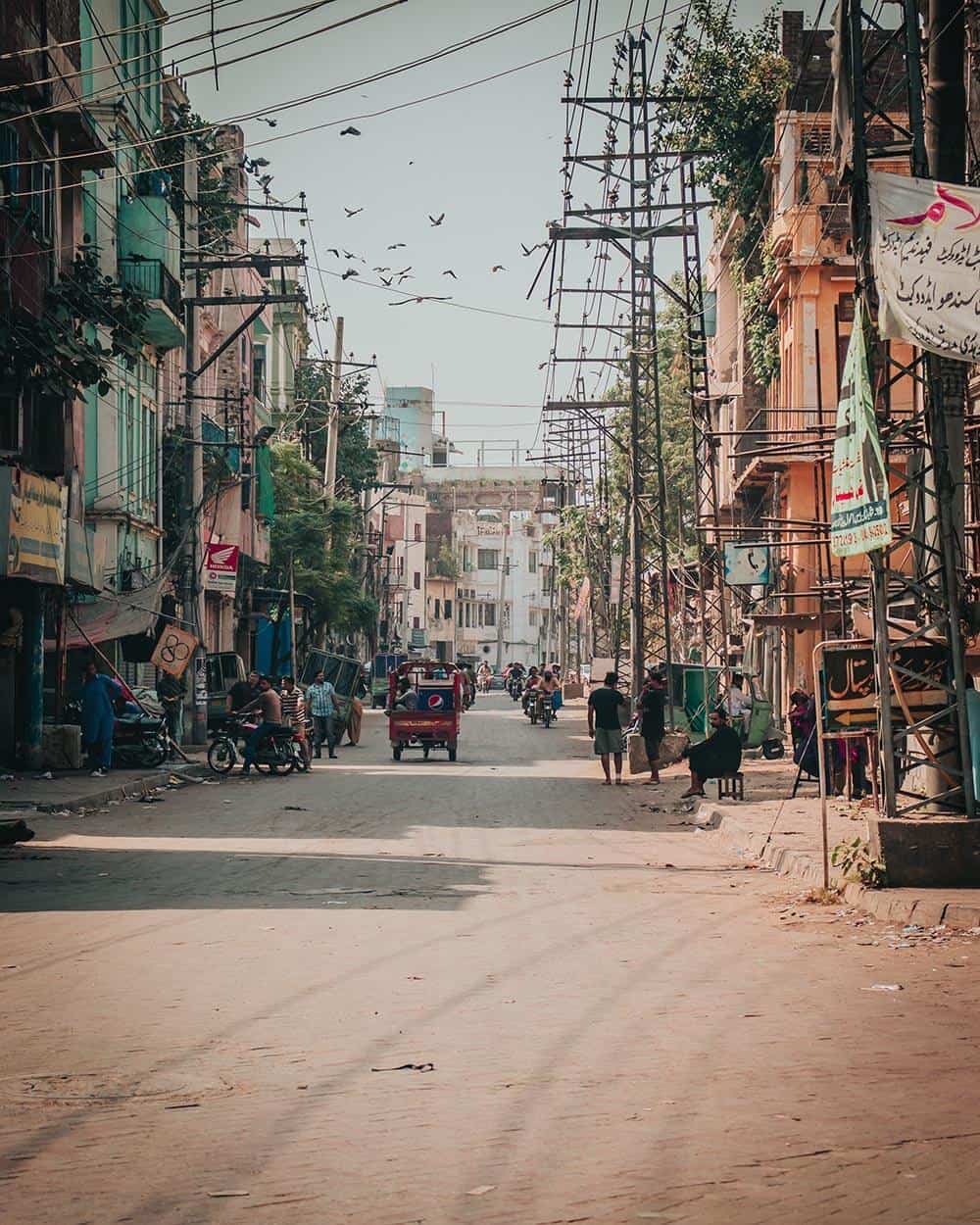Image Credit – Adeel Shabir
A monumental agreement has been struck by G77 nations on a new loss and damage fund. The documents were published on Sunday morning, (20th November) over 36 hours after negotiations at COP27 were scheduled to end.
The proposal finally made it onto the agenda of this year’s global climate summit as developing countries continue to suffer the worst effects of climate change. Financial compensation to vulnerable countries is long overdue, and it has been imperative for negotiators to come to a firm and binding agreement over allocations of finance; avoiding vague terminology and providing debt-free funding to countries that need it the most.
‘Loss and damage’ is a general term used by the United Nations to refer to the destructive effects of climate change that have pushed vulnerable countries, particularly developing countries and low-lying islands, beyond their ability to adapt and have resulted in irreversible impacts.1 The effects of climate change are being disproportionately felt across the globe. Indeed, countries contributing the least to climate change are among some of the worst affected. Earlier this year in May, Bangladesh was hit by the worst flooding in 122 years, resulting in 141 deaths and affecting over 7 million people.2 Research undertaken by IIED, the U.N. Development Programme (UNDP) and Kingston University found that, in total, rural households in Bangladesh are estimated to be spending the equivalent of $2 billion a year to repair, or to try to prevent the damage caused by climate change.3 This is over 12 times greater than the amount of aid that Bangladesh’s rural population receives from international donors.4 Bangladesh contributes just 0.6% of the world’s carbon dioxide emissions,5 emphasising that there has been a dire need for the creation of a loss and damage fund to help to address these inequalities. High and upper-middle-income countries emit a staggering 86% of global emissions, with China and the United States being the two biggest contributors.6
Vulnerable countries have been calling for richer countries to help finance the loss and damage from the disproportionate effects of climate change for decades. Back in 1991, the Pacific Island nation of Vanuatu, representing the Island Alliance of Small Island States (AOSIS) was the first to raise the issue of compensation during negotiations forming the United Nations Framework Convention on Climate Change (UNFCCC). Vanuatu proposed the development of an insurance scheme that would provide finance to vulnerable countries affected by sea level rise, and countries would contribute to the loss and damage fund according to calculations of their relative carbon emission levels as well as their share of the global gross national product.7 However, the scheme was rejected, and while promises were made in 2009, the term ‘loss and damage’ did not make it to the agenda at global climate summits until 2013.
Financing loss and damage has been debated for years due to issues arising over fairness and liability.8 Developing countries claim that developed countries are historically responsible for their unequal contributions to climate change, and as a result, call for these countries to compensate them for past and future loss and damage.9 Developed countries, however, have been reluctant to accept responsibility, and have viewed loss and damage as being related to “adaptation,” which is embodied in the Warsaw International Mechanism for Loss and Damage, (WIM) established at COP19 in Warsaw, 2013. The mechanism aims to ‘avert, minimize and address loss and damage associated with climate change impacts in developing countries that are particularly vulnerable to the adverse effects of climate change,’ and it does this by sharing knowledge and strengthening coherence, action, and support in addressing loss and damage.10 However, WIM does not deliver funding to vulnerable countries, focusing on dialogue and research rather than financial responsibility
Negotiators have committed to providing a financial support structure for the most vulnerable countries by the next global climate summit in 2023.11 Certain mechanisms of the loss and damage fund, for example, who should pay and how the money will be distributed, still need to be decided. It is also not known if China and India will take part in the initiative and whether they should compensate or be compensated, which could further complicate decision-making.12
The effects of climate change have been felt unequally for decades, and it’s about time that nations contributing to the worsening of these effects were held culpable for their actions, as vulnerable countries suffer the worst effects despite their minimal contributions to the climate emergency. Pakistan, for instance, has suffered in excess of $30 billion in damage with one-third of the country affected by severe flooding since mid-June, while the loss and damage “donations” offered since COP27 have amounted to around $237 million.
As António Guterres iterates, establishing a new loss and damage fund is a great step towards climate justice and can help to rebuild global relationships.

References
1. UNFCC, 2022. Introduction to Loss and Damage. Available at https://unfccc.int/topics/adaptation-and-resilience/the-big-picture/introduction-to-loss-and-damage [accessed 20/11/22]
2. Relief Web, 16th October 2022. Bangladesh: Flood 2022-Impact and Loss Summary. UN RC Bangladesh. Available at https://reliefweb.int/map/bangladesh/bangladesh-flood-2022-impact-and-loss-summary [accessed 20/11/22]
3. Eskander, S., Steele, P., 2020. Bearing the Climate Burden: How Households in Bangladesh Are Spending Too Much. IIED, London. Available at https://www.iied.org/16643iied [accessed 20/11/22]
4. Eskander, S., Steele, P., 2020. Bearing the Climate Burden: How Households in Bangladesh Are Spending Too Much.
5. Climate Watch, 2020. GHG Emissions. Washington, DC: World Resources Institute. Available at https://www.climatewatchdata.org/ghg-emissions [accessed 20/11/22]
6. Global Carbon Project, 2016. Global Carbon Budget 2016. Available at https://www.globalcarbonproject.org/carbonbudget/archive/2016/GCP_CarbonBudget_2016.pdf [accessed 11/20/22]
7. UNFCCC, 17 December 1991. Negotiation of a Framework Convention on Climate Change. Available at https://unfccc.int/sites/default/files/resource/docs/a/wg2crp08.pdf [accessed 20/11/22]
8. Financial Times, October 10 2022. ‘Loss and damage’ debate set to dominate at COP27
9. LSE, 28 October 2022. What is climate change ‘Loss and Damage’? Available at https://www.lse.ac.uk/granthaminstitute/explainers/what-is-climate-change-loss-and-damage/ [accessed 21/11/22]
10. UNFCCC, 2022. Introduction to Loss and Damage. Available at https://unfccc.int/topics/adaptation-and-resilience/the-big-picture/introduction-to-loss-and-damage [accessed 20/11/22]
11. United Nations, 2022. UN News: COP27 closes with deal on loss and damage: ‘A step towards justice’, says UN chief. Available at https://news.un.org/en/story/2022/11/1130832 [accessed 20/11/22]
12. Edie, 20th November 2022. COP27: Landmark deal for loss and damage agreed but progress on 1.5C questioned. Available at https://www.edie.net/cop27-landmark-deal-for-loss-and-damage-agreed-but-progress-on-1-5c-falters/?utm_campaign=Auto%20Draft&utm_source=AdestraCampaign&utm_medium=Email&utm_content=COP27%3A%20Landmark%20deal%20for%20loss%20and%20damage%20agreed%20but%20progress%20on%201.5C%20questioned [accessed 20/11/22]

22/11/2022





